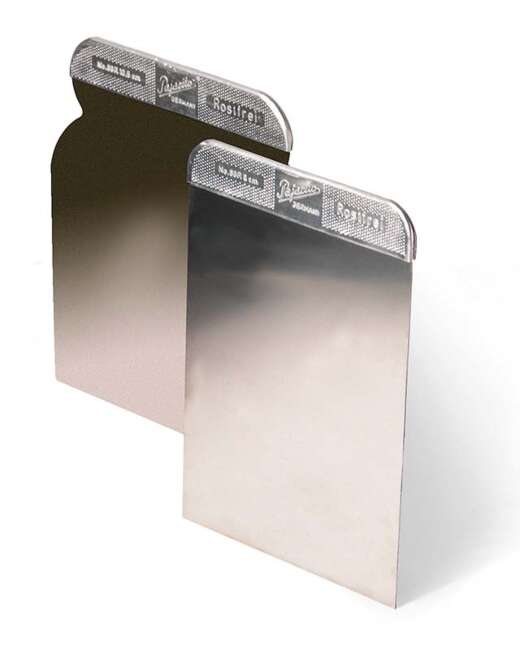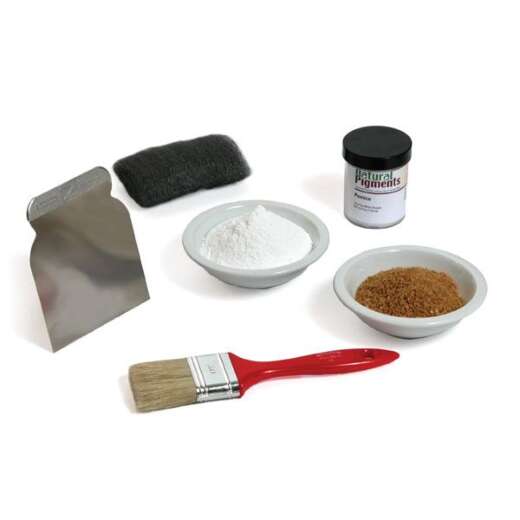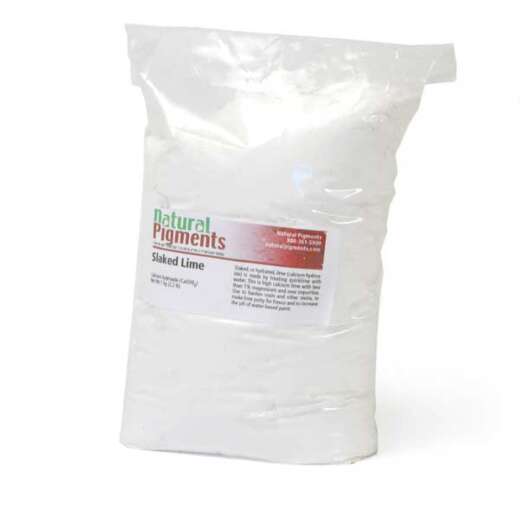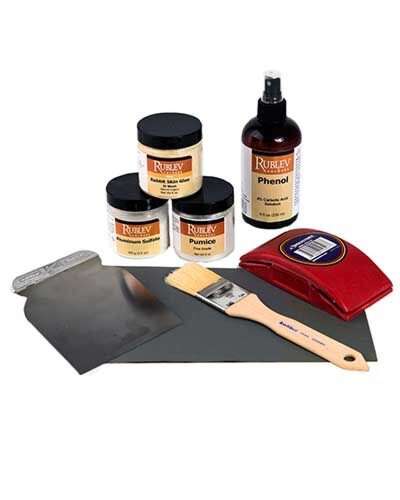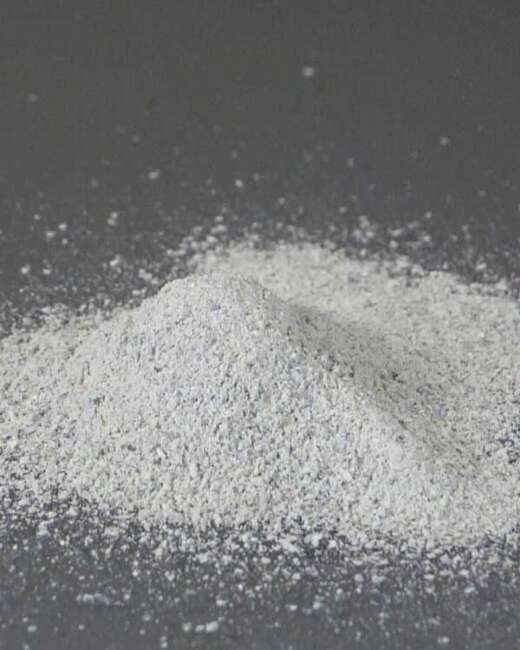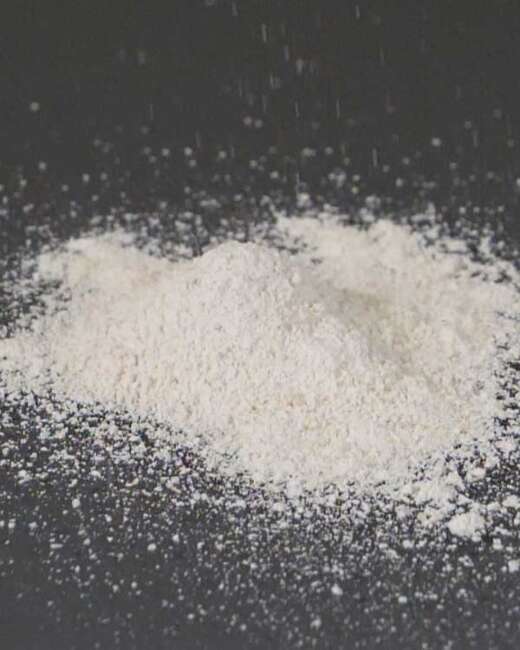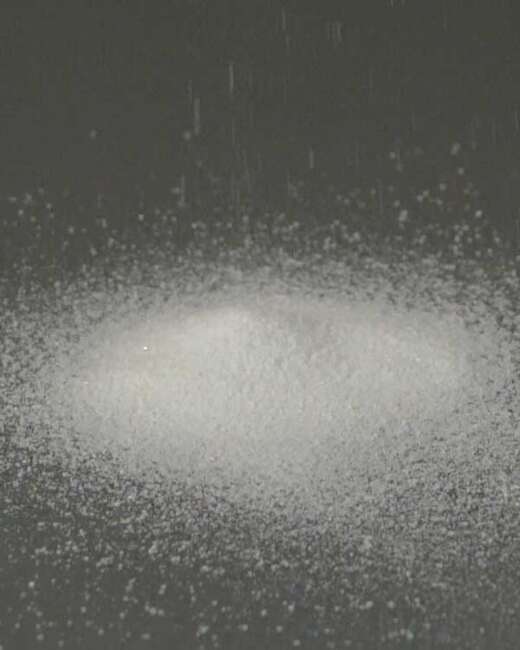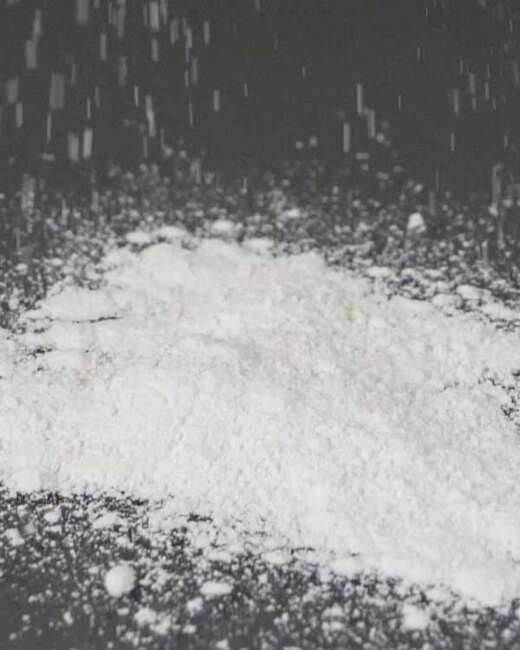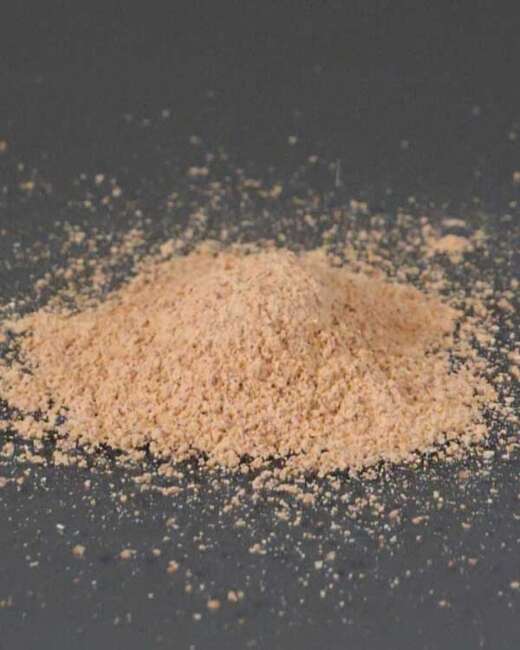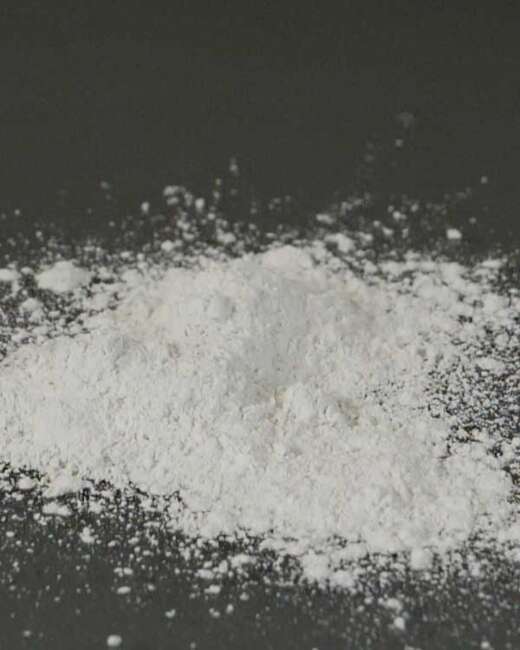No, gesso does not make wood waterproof. While it creates a smooth and paintable surface, it does not provide a waterproof barrier. If the wood will be exposed to moisture or outdoor environments, additional waterproofing measures should be taken.
Priming Wood Panels With Gesso: A Complete Guide

Gesso is a liquid preparation used to prime wood panels. It is the Italian word for gypsum but has come to mean the ground or primer for painting panels. This gel-like mass, having the consistency of cream when warm, consists of chalk or gypsum and animal collagen glue in a solution with water. This article provides recipes for sizes and grounds and step-by-step instructions on preparing and applying gesso to wood panels.
Although the discussion describes preparing gesso (glue ground) for a wooden icon board, a sacred object in the Christian Orthodox religion, the information applies to preparing and applying gesso to any wood panel. The instructions are based on the Russian practice of preparing icons so that you will find Russian terms for different parts of an icon.
Materials Required for Gesso Primer for Wood
Animal collagen glue (rabbit skin glue, hide glue, or technical gelatin),1
Chalk, marble dust, or gypsum of the highest quality,
Distilled or freshly boiled water,
Flat, bristle brush (3–3.5 cm or 1–1.5 inches wide),
Plastic or stainless steel spatula or scraper,
Piece of thin cotton or linen cloth, which in Russian icon painting is called “pavoloka,”
Awl or a medium-sized nail,
Electric or gas stove,
Water bath (also called double boiler pot or bain marine pot)
Thermometer, and
Weighing scale (preferably a metric scale with an electronic display).
Before you begin priming the board, it is necessary to calculate the amount of glue (and, in the future, chalk, marble dust, or gypsum) that will be needed to prepare the ground. Experience shows that 3 grams of dry glue is sufficient for 100 square centimeters (15.5 square inches) of board.2
Priming icon boards is a tedious and lengthy process. It consists of three basic steps:
Sizing with a 5% glue solution.
Gluing pavoloka (thin cotton or linen fabric) with a 10% glue solution.
Applying levkas (Russian word for primer) consisting of a 10% glue solution with chalk, marble dust, or gypsum.
It is important to note that the total amount of glue needed for the primer (as shown above) is easy to calculate. Calculate the amount of dry glue required for sizing the board, the pavoloka, and the ground based on the total area. We recommend the following for each stage: if 30 grams is the total amount needed, the sizing will require about 8–10% of the total amount of dry glue; the pavoloka, 35–37%; and the ground, 55% dry glue. Calculating the amount of glue in grams is not complicated.
Let’s now consider the process of priming wood boards from start to finish.
Sizing the Wood Panel
Size the board twice with a hot 5% glue solution. Pour the required amount of distilled or freshly boiled water into a clean container. Next, add the right amount of glue.3 If the glue needed is 3 grams, the water required should be 20 times that amount, i.e., 60 grams. After this, cover the container of the glue solution with a damp, thick cloth folded several times to prevent water evaporation, and leave the solution to swell for several hours. While the glue swells, scratch the front side of the board with a sharp nail or awl. This is done so that the ground better grips the board. Scratch lines on the board’s surface approximately 1.5–2.0 cm (0.50–0.75 inch) apart. After the glue swells (usually 6–10 hours—the time required for swelling is directly proportional to the amount of glue), place the solution in the water bath, heat, and mix well with a spatula. The solution should be homogeneous, fluid, and hot.4
With a broad, flat-bristle brush, apply the glue solution smoothly without dripping. Repeat the process when the board dries (the length of time required depends on the temperature and humidity).
On the following day, glue the pavoloka onto the board.
Pavoloka or Fabric Cover for Gesso Primer for Wood
Pavoloka (Russian for “cover”) is a thin, usually cotton or linen fabric glued onto the front surface of the board. It is applied to the wood to avoid cracking the ground.
Glue the pavoloka the day after sizing the board. However, prepare the glue solution in advance. For the size, prepare a 15–16% glue solution (the ratio of parts by weight of glue to water is about 1:5). First, determine the necessary amount of glue. As calculated in the previous section, the pavoloka requires 35–37% of the total amount (100%) of dry glue to prepare the board.
Soak the necessary amount of glue (1 part) in five parts of cold water, after which cover the container with a thick, damp cloth folded several times and leave for 6–10 hours to swell. After the glue in the solution is swollen, place the container in a water bath, heat to but not exceeding 60° C., and stir until smooth. After that, take a piece of thin cloth5 larger than the board it will cover, extending approximately 0.5 cm (almost 0.25 inch) on each side, and soak it in the warm glue solution for at least one hour. Instead of closing the container with a lid to avoid evaporation, cover it with a thick, damp cloth folded several times.
Before gluing the fabric onto the board, warm the glue solution with the pavoloka in the water bath. Remove it when warm and spread the material tightly without wrinkles over the entire face of the board, without stretching it or applying too much tension to the fabric. While applying the fabric, do not be overly concerned about air bubbles, i.e., blisters that appear underneath the cloth. Smooth the adhered fabric with your hand from the center outward to the edges to avoid their formation. If bubbles reappear, you can easily remove bubbles with a sharp blade by making a longitudinal incision. To ensure better adhesion of the fabric to the board’s surface, we recommend smoothing the fabric over the entire surface with the back of a large metal spoon without applying too much pressure.
Once the fabric dries (minimum of 12 hours), remove small (1–2 mm diameter) air bubbles by cutting them off with a sharp razor blade. For larger bubbles, make two incisions crosswise, lift the corners of the notched fabric, and glue them down with warm 10% glue solution, then smooth them out with the back of a spoon.6 Before priming, remove the excess fabric along the edges of the board by cutting with a sharp blade. Do this the next day after the pavoloka is applied but immediately before applying the primer.
Gesso Priming the Wood Panel
Priming the board is done in two stages. The first phase—a thin, liquid gesso, so-called “milk”—is applied in two layers. The second stage involves applying much denser ground (8–10 layers). We now consider each stage separately.
The First Stage of Priming—“Milk” Coats
While the pavoloka dries on the face of the board, prepare a 10% glue solution. The ratio of glue to water is 1:10.7 Once this solution is ready, stir well and heat in a water bath to 60° C. Once the solution is hot, sift in small portions of the dry chalk8 and mix well with a large spatula. The consistency of the hot solution should be like milk or thin cream.9
Allow the chalk to wet thoroughly in the solution for one hour, after which heat the solution again and mix well. At the time of its application to the board, the temperature of the primer should be about 35° C. Apply the primer generously with the flat bristle brush. While the primer is still somewhat wet, it is important to rub it into the weave of the fabric by hand. After the first layer has dried, apply another coat in the same manner. The chalk will settle to the bottom of the container during these operations, so to maintain a homogeneous solution, it is necessary to stir it well before and during the application of the primer.10
The Second or Main Stage of Priming
After the second or “milk” layer, warm the remainder of the primer in a water bath to 40–50° C. Add the remaining chalk in small amounts with constant stirring of the solution. Once the chalk appears to be well mixed, it is recommended to knead it by hand. One way to do this is to pour the primer into a nylon stocking and squeeze it through the mesh into a container. There should not remain any lumps of chalk. Next, cover the container of the chalk primer with a damp, thick cloth and leave overnight in a cool place.
The next day, warm up the primer and again mix well. The consistency should be similar to sour cream. The priming solution should be warm, about 35° C. Apply the primer with a broad, flat bristle brush or spatula (a plastic spatula is usually best).11 Apply each coat uniformly over the surface of the board (preferably using single brush strokes without much overlap). Apply each successive layer of primer only after the surface of the previous layer dries. Alternate the direction of the brush or spatula with each new primer layer. For example, apply the first layer with vertical strokes, the second in the horizontal direction, and so on. The number of layers (10–12) depends on the thickness of the ground and, therefore, may fluctuate. The time for drying of each layer varies from half an hour to an hour, depending on the temperature and humidity, wood absorbency, layer thickness, etc.
We recommend adding a small amount (5 drops from a pipette) of 5% ethanol (ethyl alcohol) to each subsequent ground layer. This helps the glue solution in the ground wet the substrate better because it lowers the surface tension of the glue solution. Cover the container with a damp, thick cloth to avoid evaporation of water from the primer while working and during breaks.
Do not hasten the drying of the ground with heat or by exposing it to direct sunlight. While applying the ground to the surface of the board, small elevations or grooves inevitably form that you can easily clean up, but only after the layer dries. The uneven surface can be scraped smooth with a razor blade, held perpendicularly to the board’s surface, or with 400-grit sandpaper (or emery paper). The applied ground should be dried naturally. Typically, drying overnight, the ground will be ready in the morning for sanding.12
Polishing the Gesso Primer for Wood
To polish the ground, first use 400-grit sandpaper. Then, use 600, 800, and 1000 grit, which are more fine-grained. Remove caked-on ground from the sandpaper from time to time. In places where you will gild, polish the surface carefully. Once the surface of the ground becomes silky smooth and you have removed all traces of chalk dust, you can begin painting on the board.
Notes
1 The best is sturgeon glue; its only drawback is its high cost.
2 For example, to calculate the total amount of glue needed for a board with a surface area of 1000 cm2 (155 in2), multiply 10 x 3 = 30 g. This calculation allows for a small amount of leftover glue.
3 A 5% glue solution involves a 1:20 ratio of glue to water.
4 The solution should be heated to about 60° C. and not higher because a glue solution heated above that temperature begins to lose its adhesive properties. To determine the correct temperature without a thermometer, if your finger is uncomfortable but able to withstand the water, it is at the right temperature.
5 If the fabric is new, wash it in warm water.
6 The most challenging place to apply the fabric is in the luzga (the 45° angled borders that divide the inside of the icon’s front side [called kovcheg, literally “ark” in Russian] from its outside margins). We recommend that while applying the fabric along the luzga, make an incision in the corner and, if necessary, along the perimeter (the blade must be very sharp). It is imperative to observe that the fabric is very well pressed into the four corners of the luzga.
7 If using technical gelatin or hide glue, the ratio of glue to water is the same as in the above preparation of the glue solution containing rabbit skin glue.
8 The amount of chalk needed for both stages of the primer is calculated as follows: the amount of chalk should be 10–12 times greater than the weight of the dry glue in a solution. Thus, the weight ratio of dry glue to the chalk is 1:10 to 1:12.
9 Upon cooling, the ground becomes a jelly-like state.
10 The larger the board, the more glue and chalk are needed for the ground, and the more carefully and frequently the primer should be stirred.
11 Another way of applying the ground is to drop the primer in puddles with the bristle brush onto the kovcheg of the icon board, and then, before the primer dries, spread it out with a spatula, holding it at a 30° angle. After covering the kovcheg of the icon board with the primer, apply it to the outside margin in the same manner as the kovcheg. After applying 8–10 layers, apply the last 2–3 coats with a spatula, keeping it at a 45–50° angle.
12 There is another way of applying the ground, which can be recommended to those with experience priming with chalk or gesso grounds. Apply the first half of the layers by brush with the warm primer at a temperature of about 35° C. Apply the layers sequentially—first in one direction, and after each dries, in another direction perpendicular to the preceding, and so forth. Around the sixth layer, apply the primer without warming in a gel-like state using a spatula along the outside margins and the edges, then go to the central part of the icon. Apply the first layer, holding the spatula at an acute angle (about 30°). Apply the last few layers, keeping the spatula at an angle of 45–50°. Between layers, it may be necessary to sand the ground lightly with 400-grit sandpaper.
Things to Know
Effects on Wood
Gesso is a versatile material used to prime wood panels, creating a smooth, slightly textured surface that is ideal for painting. It does not make wood waterproof but provides a solid foundation for various art mediums. The preparation process involves applying multiple layers, each contributing to the final smoothness and durability of the surface.
What Does Gesso Do to Wood
Gesso prepares wood for painting by filling in the grain and providing a surface to which paint can more effectively adhere. It creates a barrier that prevents the wood from absorbing paint, ensuring the paint stays vibrant and true to its color. Gesso also adds a slight texture, which can help with the application and appearance of the paint.
Priming
How to Prime Wood with Gesso
Priming wood with gesso involves several steps:
Sizing: Apply a hot 5% glue solution to the wood panel to prepare it for gesso.
Applying Pavoloka: Glue a thin fabric, such as cotton or linen, onto the sized wood to prevent cracking.
First Stage Priming (“Milk” Coats): Apply a thin, liquid gesso mixture to the wood, usually in two layers.
Main Stage Priming: Apply multiple layers (8–10) of a thicker gesso mixture, alternating the direction of the brush strokes for each layer to ensure even coverage.
Sanding: After the final gesso layer has dried, sand the surface with progressively finer sandpaper to achieve a smooth finish.
Uses
What Is Gesso Primer Used For
Gesso primer is used to prepare various surfaces for painting, particularly wood panels. It ensures the paint adheres well and provides a consistent, stable base. Gesso can be used for a wide range of painting techniques, from acrylics to oils, and is essential in creating a professional-quality finish.
Using on Wood
Using Gesso on Wood
Using gesso on wood involves a meticulous process of preparation and application. First, the wood is sized to seal the surface, followed by gluing a protective fabric layer. Then, multiple layers of gesso are applied, starting with thinner “milk” coats and progressing to thicker layers. Each layer must dry thoroughly before the next is applied, and the final surface is sanded to smoothness.
Dry Time Before Sanding
How Long Should Gesso Dry Before Sanding
Each layer of gesso should dry for at least 30 minutes to an hour before the next layer is applied. After the final layer, it is best to let the gesso dry overnight to ensure it is fully cured and ready for sanding. Proper drying times prevent the gesso from becoming tacky and ensure a smooth, even surface when sanded.
Best for Beginners
Best Gesso for Beginners
For beginners, it is recommended to use a pre-mixed gesso, which is easy to prepare and apply and dries relatively quickly. Easy Gesso is a ready-to-use product that creates smooth and easy-to-sand surfaces, providing a good surface for various types of paint. Easy Gesso is user-friendly, requires less preparation, and offers consistent results.
Frequently Asked Questions
Does gesso make wood waterproof?
How long should you leave gesso before painting?
It is recommended to let each layer of gesso dry for at least an hour. However, for best results, allow the final layer to dry overnight before painting to ensure it is completely set and stable.
What is the difference between gesso and primer?
Gesso is a type of primer specifically used to prepare surfaces for painting. While all gessos are primers, not all primers are gessos. Gesso typically contains a mixture of binder, chalk, and pigment, giving it a unique texture and tooth that is ideal for painting.
How long does gesso take to dry on wood?
Each layer of gesso typically takes 30 minutes to an hour to dry to the touch. However, it is best to let it cure fully overnight to ensure it is completely dry and ready for painting or additional layers.
Can you use gesso on wood?
Yes, gesso can be used on wood. It is commonly used to prime wood panels, providing a suitable surface for painting by creating a slightly textured base that helps paint adhere better.
Can I use gesso as primer on wood?
Yes, gesso is often used as a primer on wood. It prepares the wood surface for painting by filling in the grain and providing a smooth, absorbent surface that improves paint adhesion.
Do I need to seal wood before gesso?
While sealing wood is not always necessary before applying gesso, sizing the wood with a glue solution, as described in the article, can help ensure better adhesion of the gesso and prevent it from soaking into the wood.
How many layers of gesso should I use on wood?
It is generally recommended to apply multiple layers of gesso to achieve a smooth and even surface. The article suggests applying 10–12 layers for best results, depending on the desired thickness and surface finish.
Why do you sand after gesso?
Sanding after applying the final layer of gesso helps to create a smooth and even surface, removing any imperfections or texture that may have formed. This provides an ideal base for painting, ensuring the paint goes on smoothly and evenly.



